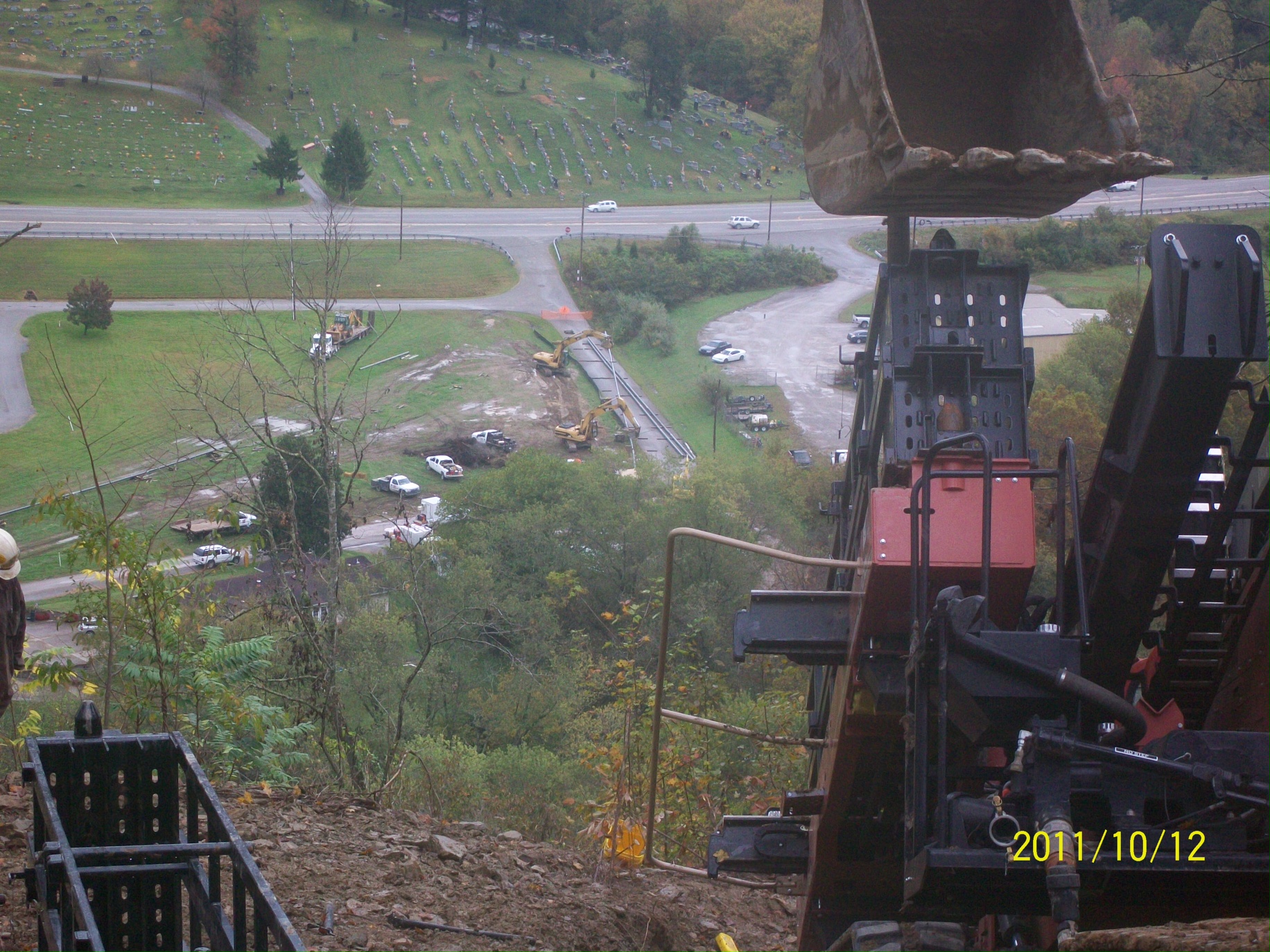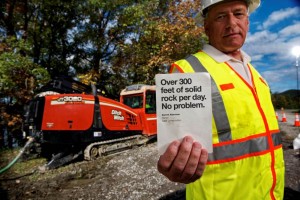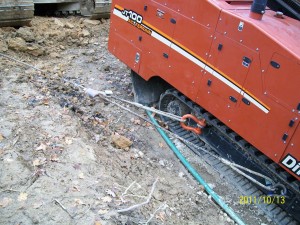February 2013, Vol. 68 No. 2
Features
Gas Distribution Drilling In Steep Grades

G & W Construction is a utility contractor based in Morehead, KY, in the foothills of the Appalachian Mountains and the Daniel Boone National Forest.
The area boasts beautiful country, but below the surface are rocky conditions. Beautiful scenery, but rugged terrain over hard rock formations makes installing water, sewer, and gas pipes in the ground tough, challenging work.
“G & W Construction is a family business started more than 50 years ago by my father,” said Darrell Alderman, owner and president. “G & W began as a general contractor building commercial structures and schools, and then evolved to sanitary sewer, water and gas construction.”
Most work today is water and gas, Alderman said. “We use open-cut construction, conventional boring and horizontal directional boring (HDD),” he continued. “The biggest percentage of our work still is open cut.”

However, in the last 10 years, directional drilling is being used more and more often to cross under rivers, highways and railroad tracks, and in areas where terrain makes excavation difficult or impossible.
“Most projects these days have segments that call for directional drilling,” Alderman said. “For several years, we subbed that work out, but as the amount of drilling increased in 2010 we invested in a small drill unit. Then we got a larger machine with 30,000 pounds of pullback and most recently a 100,000-pound pullback model for making longer runs of larger diameter pipes.”
HDD equipment
For HDD segments, G & W uses two Ditch Witch Jet Trac models: a JT3020 AT and JT100 AT.
The JT3020 AT is a relatively compact package that develops 30,000 pounds of thrust, 4,000 foot pounds of torque, and spindle speeds to 225 rpm. The JT100 AT–the largest drill unit in the Ditch Witch line — is powered by a 268-horsepower diesel engine. It produces 100,000 pounds of pullback, 12,000 foot pounds of torque and a maximum spindle speed of 270 rpm.
The ‘AT’ designation stands for ‘All Terrain.’ AT models have a dual-pipe drilling system designed to drill through hard rock without the use of a mud motor. It enables the 30,000-pound JT3020 AT to drill in rock other machines of comparable size cannot work through.
The mechanical dual-pipe system delivers maximum downhole horsepower and operates on low volumes of drilling fluid. The AT design has an inner rod to drive a rock bit, and the outer pipe steers the downhole tool for drilling pilot holes and provides rotary torque for the hole opener during backreaming. All Terrain models also are productive in most other types of soils.

“Most drill units can drill through rock, but steering the drill head is the key,” Alderman said. “The AT units really do a sweet job of drilling and being guided through rock formations.”
Alderman said G & W’s rock drilling capabilities have brought business from other contractors, as well as turnkey jobs in which the company makes pipe installations and connections. “Our drills are busy most of the time,” he added.
Steep drilling
A recent example of the company’s rock drilling capabilities is installation of a gas distribution line in Prestonsburg, KY. The job required installation of 5,000 feet of eight-inch diameter steel gas pipe. Most of the job was on a state highway and railroad right-of-way. The JT100 AT was used for the project.
“The area was very mountainous,” said Alderman. “At times, the drill had to be winched up the side of a hill to the set-up spot.”
Six bores were made, ranging in length from 200 to 1,362 feet. Drill operator Alex Wells said the longest was the most difficult.
“In this area there’s most every type of rock,” said Wells. “We set up at the low end of the bore, crossed under CSX railroad tracks and the Levisa Fork of the Big Sandy River and up to the exit point which was 375-feet higher than the entry. In some places the slope was so steep we put a rope on the locate man so he could follow the bore path. We had to go to a depth of 62 feet under the railroad tracks.”
That the JT100 AT could make the installation without a mud motor is a big advantage when crossing railroad tracks and highways because the large volume of drilling fluid required to run a mud motor increases the risk of a frac out.
Wells said the JT100 AT was pumping about 25 gallons per minute (gpm) of fluid on the job, while a mud motor likely would be using 250 gpm.
After the pilot bore was completed, it was pre reamed, and the drill unit was moved to the exit point to pull in the welded string of pipe.
“The pipe weighed 55,000 pounds, and we were pulling uphill,” said Wells. “Some wondered if it could be done, but the pull-in went smoothly.”
FOR MORE INFO:
G & W Construction, (606) 784-2396
Ditch Witch, (800) 654-6481, www.ditchwitch.com
Utility Construction And Racing
For many years, Darrell Alderman managed both his busy utility construction business, G & W Construction, while competing as a professional race car driver.
“I raced professionally for 20 years driving pro stock cars in National Hot Rod Association events,” said Alderman. “I was sponsored by Mopar, the parts division of Chrysler.”
During his racing career, Alderman won three world championships and 29 national events. Alderman still runs G & W Construction, but has retired from racing.
“Of course, I still follow it,” he said. “I love racing. But as we get older our reflexes slow and vision fades. The time comes when you have to move over for younger drivers — racing is a young man’s sport. But I love racing and always will.”




Comments